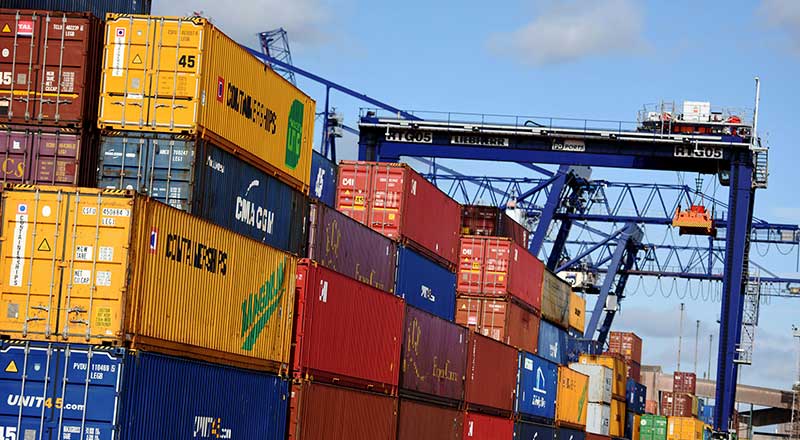How to accelerate supply chain digital transformation
By
Dr Muhammad Imran Qureshi
Senior Lecturer (Global Supply Chain Management)
The limited degree of supply chain digitalisation is mostly a result of the limitations of the technologies that organisations have had at their disposal up until recently.

One of the first business processes to experience significant technological advancements was supply chain management, as software developers created tools to utilise the data supplied by integrated enterprise resource planning (ERP) systems. However, the inability of many ERP systems to handle unstructured data prevents cross-functional, data-driven decision making.
Digital solutions assisted by artificial intelligence (AI) and capable of storing, processing and analysing enormous amounts of unstructured data are now available from an ever-expanding ecosystem of technology vendors and service providers, enabling digital transformation of supply chains. This was sparked by cutting-edge technologies like blockchains, cloud computing, Internet of Things (IoT), big data and robotic process automation. Accurate information is now instantly accessible throughout the supply chain owing to digital transformation, supporting data-driven decision making with AI-based digital applications.
Despite the fact that organisations are continuously seeking ways to speed up this process, supply chain digital transformation is a broad, intricate strategic process that necessitates specialised skills at every stage of the transformation process. The main issue is how to effectively adopt and where to start the supply chain’s digital transformation, even while it leads to revenue growth, operational flexibility, and agility.
Although this is a continuous process and usually challenging to evaluate the present status since the specifics may vary from industry to industry, there are four common steps to follow.
1. Establish a vision
The phrase ‘digital transformation’ may have a seductive ring to it. However it is frequently misunderstood and usually a comprehensive ecosystem development is ignored as a result of concentrating just on one area of it, which results in a lack of strategic thinking and vision on the part of the supply chain’s digital transformation.
As digital transformation uses a lot of resources, it is important to comprehend the main advantages. A strategic approach is therefore necessary since it is a complicated, multifaceted strategic process that transforms people, technology, data and processes in an integrated corporate ecosystem towards a shared vision.
2. Assess organisational needs and readiness
The supply chain’s digital transformation vision serves as a point of reference for the second stage of transformation planning, which involves a detailed assessment of the business and technological capabilities of the supply chain. It is crucial to evaluate the organisational readiness in four areas of digital transformation to create a clear path for the transition.
Data
Digital transformation of the supply chain depends on data. The key is to assess current data mining, storage, flow, scalability and analytical capabilities, as well as privacy and security concerns, in order to propose a roadmap for crucial transformative actions which will enable supply chain digitalisation.
Technology
In comparison to traditional ERP systems, the technical requirements for digital supply chain transformation are significantly different. The newest technologies enable data-driven decision making through digital supply chains, including robotic processing, cloud computing, blockchains, IoT, AI, and digital and analytical tools. In order to map improvements, it is crucial to assess the supply chains’ current capabilities.
Processes
Digital supply chain processes are more dynamic than traditional supply chain processes, allowing for constant adaptation, the ability to learn, and the flexibility to improvise technology changes. For the supply chain to undergo digital transformation, a complete assessment of the processes’ current dependability, flexibility, adaptability, and learnability is essential.
People
People are at the centre of every digital transformation in the supply chain. A complete evaluation of the personnel capabilities is required to make sure that the technical skills, talent and innovativeness of the current workforce to aligned to the digital transformation strategy.
3. Create a supply chain roadmap
Supply chain digital transformation is a challenging process that demands for a thorough roadmap to support supply chain digital ecosystems. Organisations are more likely to devise a suitable plan for supply chain digital transformation when they have a clear comprehension of the current state of the existing capabilities.
The key objectives in terms of data, technology, processes, and people should be identified, scheduled and delivered milestones through a roadmap for digital transformation. The roadmap of adopting new technologies and developing an innovative digital ecosystem that makes up the supply chain’s digital transformation is divided into three phases: initiative, transformation and improvisation. The activities linked with each stage can be used to track progress towards digital transformation of supply chain since each stage has unique goals for each of the four supply chain enablers – data, technology, processes, and people – that lay the foundations for long-term digitalisation goals.
The initiative stage, which emphasises being prepared for the supply chain digital transformation, includes developing a shared vision, prioritising technology acquisition, talent development, and establishing dynamic organisational capacity. This stage’s primary goals are resource allocation and developing organisations’ dynamic capabilities.
The transformation stage is highly structured and concentrates more on creating long-term cross-functional capabilities, such as the establishment of big data mining, storage, flow and security capabilities. In terms of technology, this can include those highlighted earlier which support data-driven decision making. Process adaptability is essential at this point to enable technology to link systems and create a digital ecosystem throughout digital supply chains. The development of human resources capabilities that maximise supply chain digitisation must also be prioritised.
When supply chains’ digitalisation capabilities are operational, it is time to improvise and take advantage of the potential through open innovation. Businesses that actively digitise their supply chains may anticipate an average yearly improvement in earnings of 3.2%, according to McKinsey, but ongoing advances in data scalability, technology advancement, and competitive human resources that foster distinctiveness and competitive advantage can maximise the advantages of digital supply chains.
4. Continuous improvement
Despite offering enterprises a plethora of advantages, the digital transformation of supply chains is a never-ending process. Companies wanting to digitalise their supply chains need to be aware of the scope of ongoing development. Internal systems that assess the progress of digitalisation must be created, and market and technological intelligence must enable firms to make continual improvements in data, technology, processes and people.
 Groundbreaking project to unlock nuclear energy's role in
...
Groundbreaking project to unlock nuclear energy's role in
... Start the new year by expanding your knowledge
Start the new year by expanding your knowledge  Teesside University strengthens long-standing partnership
...
Teesside University strengthens long-standing partnership
...